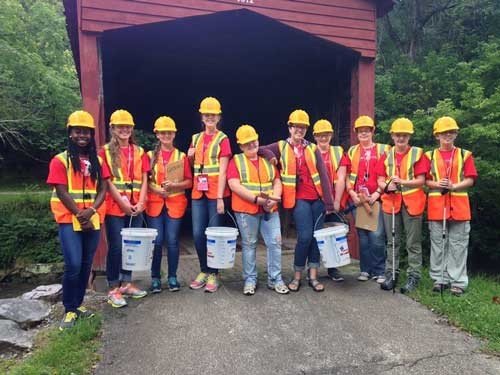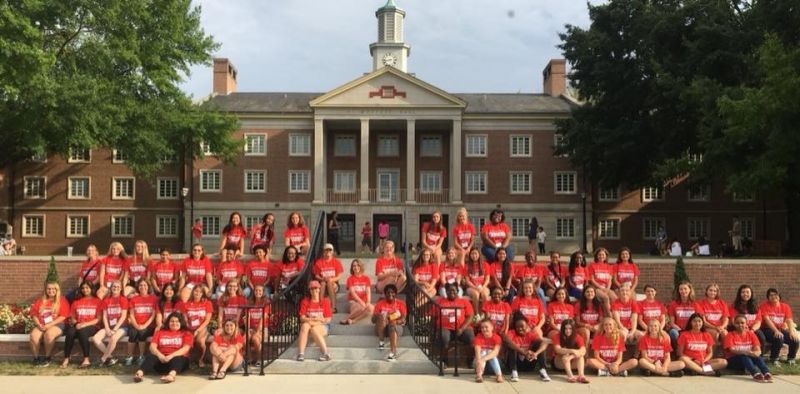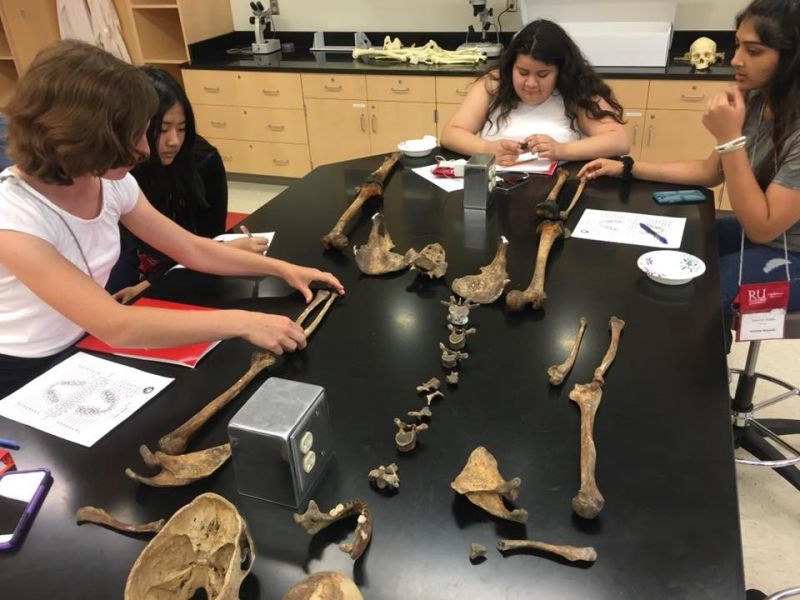At Radford University this week, a group of rising sophomore, junior, and senior high school women interested in science, technology, and math spent their days sampling river water, assembling molecules and examining human bones.
Women fill less than 25 percent careers in science, technology, engineering and math. Bridging the gender gap, Radford University’s summer program trained 40 high-school aged women in field and lab skills where they built rockets, hacked code, examined bones and collected environmental samples.
The Radford University Artis College of Science and Technology Summer Bridge STEM program is a week-long residential experience that offers classroom lessons, laboratory experiments, and field experiences led by Radford University professors with the goal of helping young women collect field and lab experience in science.
“We had about 40 campers this year, mainly from Virginia. All females interested in STEM – science, technology, engineering and math – and all rising sophomores, juniors and seniors,” said Mary Hardbarger, public relations writer at the university.
In its twelfth year, the program was supported by local businesses and field sites.
“They spent the week in the classroom with Radford University faculty, staff and students exploring their unique interests in areas such as biology, chemistry, geology, forensic science, physics and math,” Hardbarger said. “They also went on field trips based on their interests to locations such as Selu Conservancy, Torc Robotics and Novozymes.”
Women fill less than 25 percent of STEM careers, but increasingly, Virginia and the nation are providing scholarships and early training to right that inequity recognizing the need to prepare all students for a STEM-centeric future.
Breaking into interest groups, young women built and launched rockets, built rockets, studied mountain building, flew drones combatted computer hackers and analyzed theoretical crime scenes.
For women interested in medical applications of biology and chemistry, they explored genes, molecules and medicine. Budding environmental scientist sloshed in creeks.
“On campus, campers flew UAVs (drones), launched rockets, studied skeletons and rock formations and built peptides, just to name a few hands-on activities,” said Hardbarger. “Off-campus trips included visits to Mountain Lake, TORC Robotics, Novozymes and Selu Conservancy.”
—Staff Reports




